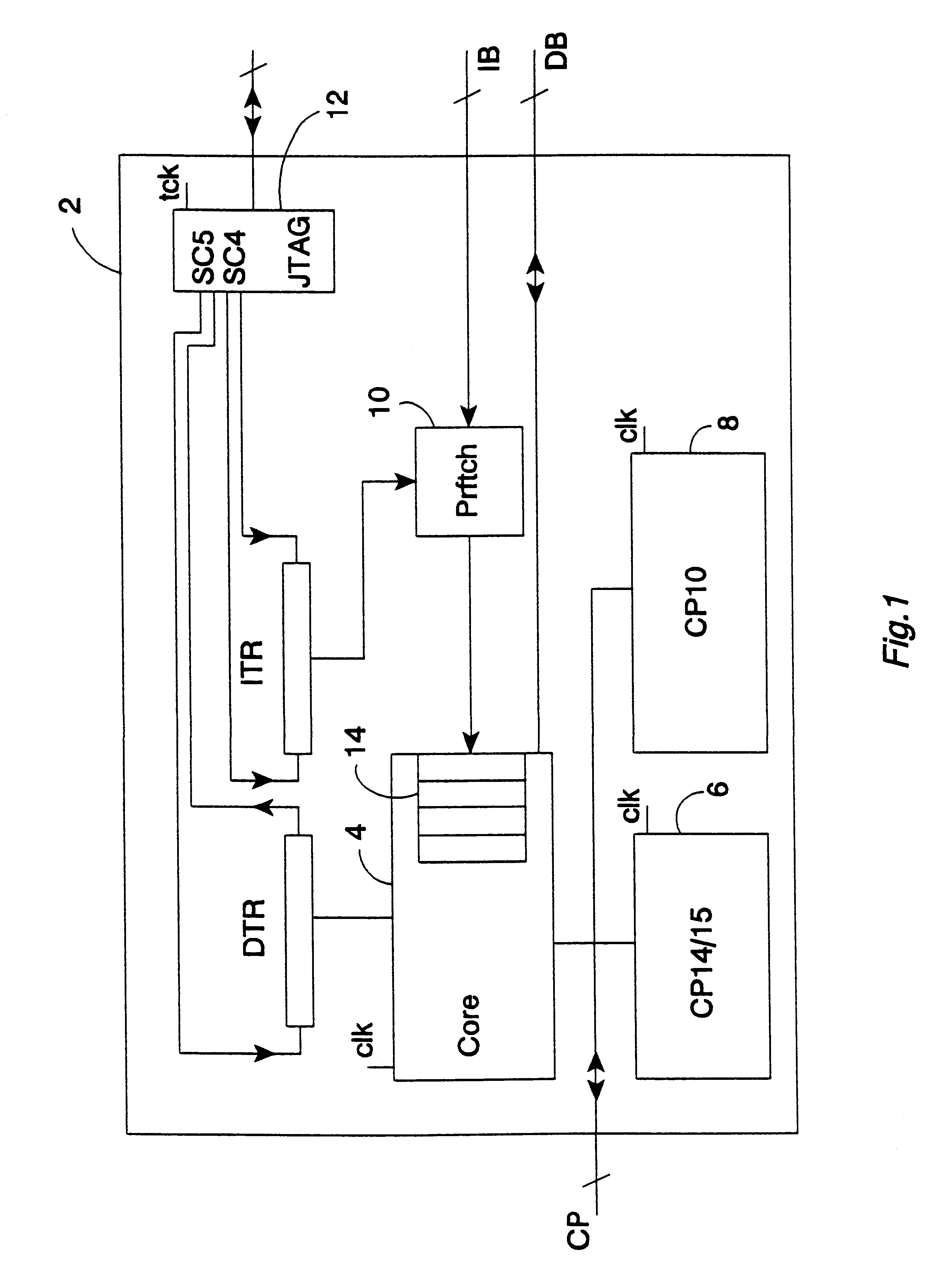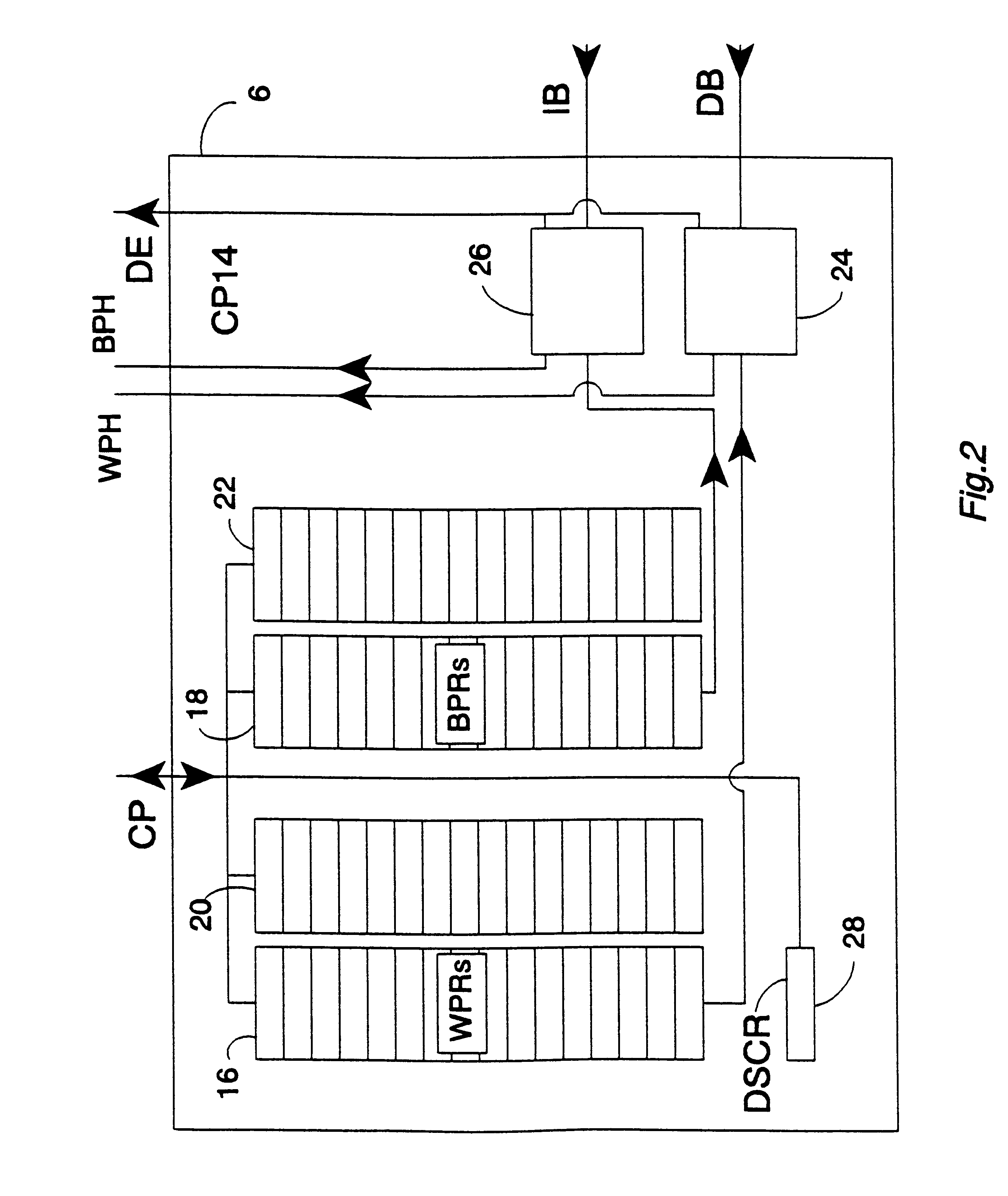Executing debug instructions
a debugging instruction and instruction technology, applied in the field of data processing systems, can solve the problems of requiring switching between clock speeds, reducing the value of diagnostic operations, and not being able to execute instructions at their normal speed,
- Summary
- Abstract
- Description
- Claims
- Application Information
AI Technical Summary
Benefits of technology
Problems solved by technology
Method used
Image
Examples
Embodiment Construction
FIG. 1 shows a data processing system 2 that includes a main processor 4, a debug coprocessor (and system coprocessor) 6 and a floating point unit coprocessor 8. The main processor 4 is coupled via a coprocessor interface in the form of a coprocessor bus CP to the debug coprocessor 6 and the floating point unit coprocessor 8. The form of this coprocessor bus CP is substantially the same as a standard coprocessor bus, such as the ARM coprocessor bus (as used with microprocessors produced by ARM Limited of Cambridge, England).
The main processor 4 is coupled to a data bus DB and via a prefetch unit 10 to an instruction bus IB. The data bus DB and the instruction bus IB both include address portions that are monitored by the debug coprocessor 6 to identify breakpoints and watchpoints respectively.
The main processor 4, the debug coprocessor 6 and the floating point unit coprocessor 8 are all driven by a common main processor clock signal clk at a main processor clock frequency. A scan ch...
PUM
 Login to View More
Login to View More Abstract
Description
Claims
Application Information
 Login to View More
Login to View More - R&D
- Intellectual Property
- Life Sciences
- Materials
- Tech Scout
- Unparalleled Data Quality
- Higher Quality Content
- 60% Fewer Hallucinations
Browse by: Latest US Patents, China's latest patents, Technical Efficacy Thesaurus, Application Domain, Technology Topic, Popular Technical Reports.
© 2025 PatSnap. All rights reserved.Legal|Privacy policy|Modern Slavery Act Transparency Statement|Sitemap|About US| Contact US: help@patsnap.com



